Today, companies across the globe face increasing environmental and sustainability regulations, many of which are aimed at standardizing and improving reporting across a range of sustainability targets. In May, the Council of the European Union adopted an Ecodesign resolution which will place sustainable product design requirements on most goods sold within the EU, regardless of where they were manufactured.
While the directive must still be adopted and transposed into law by each member state, the baseline requirements will likely remain consistent: products must be designed with circularity in mind. Products must be more durable, reparable and reusable. End-of-life product recycling is also a focus; the regulation will introduce a direct ban on the destruction of unsold textiles and footwear. This regulation will require companies to address their impacts, business models and processes in ways that they’ve not done before.
Getting - and staying - ahead of compliance mandates in the ESG regulatory environment is increasingly central to successful business strategies and productive operations. That means understanding, embracing, and leveraging the opportunities the circular economy presents.
“These new rules are likely to mark a shift in how norganizations approach ESG, seeing it not just as a compliance and risk management task, but as an opportunity to overhaul their business models”. – Sustainability Magazine
Many companies have realized the importance of integrating environmental and sustainability measures into their core business practices. However, there is still much more that can and should be done in important areas such as resource efficiency, waste reduction, and repair and reuse.
“Up to 100 billion garments are produced by the fashion industry every year. And each year, as much as 92 million tons of clothing ends up in landfill.”1
“Globally, 50 million tons of e-waste is generated per year, and by 2030, that number will grow to 75 million tons, only 17.4% of e-waste produced reached recycling facilities or was formally managed”. 2
These statistics are inevitably adding to the pressure on global regulators to intervene with further and more complex requirements. Commentators point to an increase in consumer awareness of environmental impacts and climate change, while the volume of goods returned by consumers continues unabated.
The current narrative points to a continued upwards trend in returns, with figures from the US National Retail Federation (NRF) indicating returns volume in the US alone more than doubled in the last six years to over $743 billion in 20233.
Circular Economy Opportunities within Logistics Solutions
Given these imperatives, companies still struggling to reduce their impacts must understand how they can embrace these challenges. As daunting and complex as it may seem, logistics providers like GXO, with tech and automation expertise, data analytics, tailored solutions, and expert knowledge, can help retailers and brands of all sizes, across all sectors to reduce their environmental impacts and comply with complex regulatory requirements. By following the four R’s – reduce, reuse, replace, recycle – companies can continue to identify ways in which gains can be made that reduce environmental impact, increase productivity, and drive the circular economy.
Adhering to regulations and standards for the handling and disposing of products, materials and packaging helps companies minimize negative effects on the environment and reduces waste.4
Reduce
Inventory – While it’s commonly recognized that effective inventory management is central to cost optimization, profit and efficiency, holding too much stock, or the wrong type of stock, remains an area where companies can do more to reduce unnecessary waste.
By using data science, data-driven processes and analytics, companies can improve their stock management and forecasting ability, save money, resources, and storage costs as well as reduce waste by removing excess inventory from their supply chain.
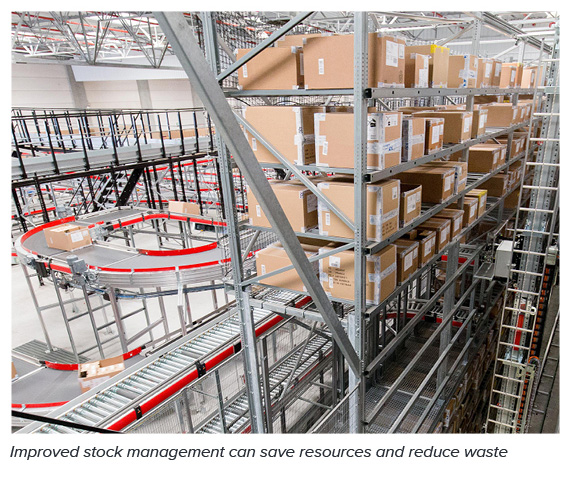
Case Study
By utilizing accurate data systems and inventory management processes, GXO was able to reduce stock holding by 28%”5 for one leading telecommunications provider. By streamlining the number of systems for another customer, we were able to recover 11,000 SKUs with a value of over £2million6 that were then placed back into centralized inventory.
Packaging – As pressure rises across all jurisdictions to recycle and reduce unnecessary packaging, logistics providers can play a significant role helping companies reduce their packaging in the first place. Using automated and customized solutions, it’s possible to custom fit and right-size packaging, which not only reduces the amount of packaging but also reduces storage and transportation impacts, driving corollary positive impacts on emissions reductions. For example, by right-sizing packaging for one customer, GXO increased the number of packages that fit onto an outbound pallet by 25% which drove a 27% reduction in transportation costs and saved 2.7 metric tons of CO2 emissions annually7. This means that greater order volume can be processed for delivery at one time, leveraging full-truckload (FTL) over less-than-truckload (LTL).
Emissions – As retailers and brands in the logistics industry prepare to transition to zero-carbon economies, they are focusing on developing cost-effective and efficient alternative fuel vehicles. In the meantime, AI-driven route optimization is proving to be a quick and cost-effective way to reduce emissions from current fulfillment transportation solutions. GXO and Datasparq have worked closely to enable AI route optimization systems to help a leading UK grocery retailer improve its transport route efficiency. One depot reduced its distance driven by over 900,000 kilometers a year, reducing diesel consumption by over 250,000 liters and delivering over 720 tons of overall carbon emission savings to date8. Right-sized loads travelling optimized routes can significantly reduce a company’s emissions and transportation costs.
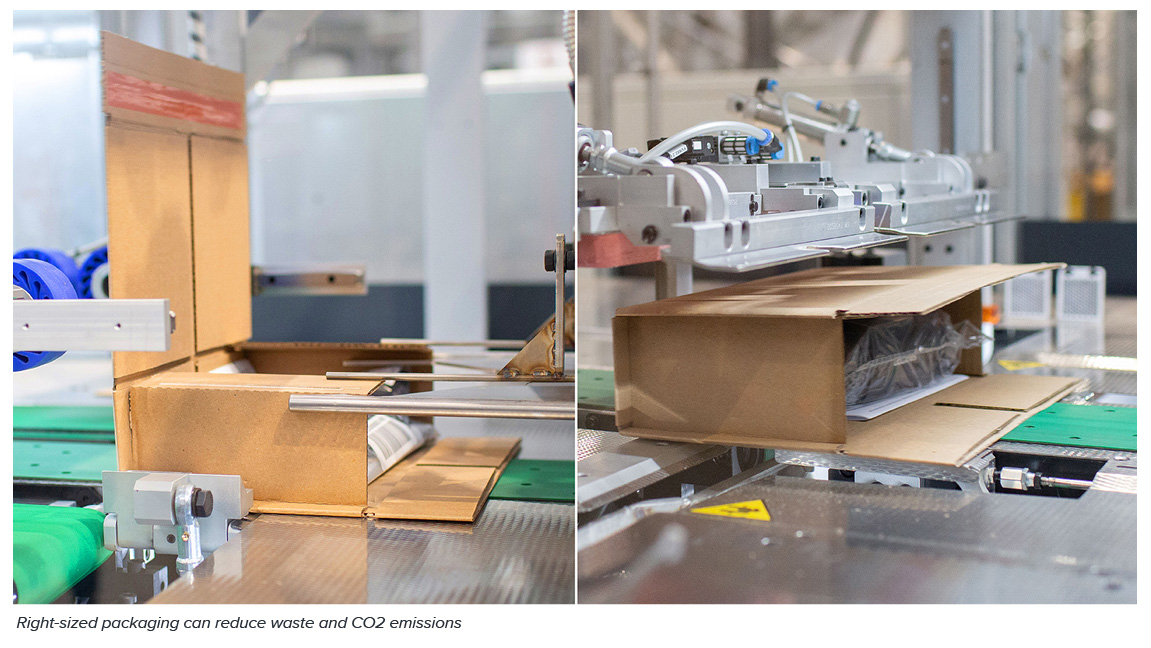
“Minimizing road miles and reducing fuel consumption across our fleet, without sacrificing outstanding customer service, is a top priority for us [...] With the power of new technologies such as AI, and strong partnerships with GXO and Datasparq, we are one step closer to a more sustainable future.” Iceland9
Reuse
In 2023, analysis shows UK shoppers sent back more than £4.1 billion of online clothing purchases, estimated to rise by 16.7% before 2027.10
In the US “Retailers have been focused on efforts to mitigate returns, as total returns for the industry amounted to $743 billion in merchandise in 2023. As a percentage of sales, the total return rate for 2023 was 14.5%”.11
The global statistics for returned goods are set to continue on an upward trajectory, presenting retailers and brands with an ongoing challenge. Delivering an efficient returns process where the absolute maximum can be returned swiftly to inventory for resale, rather than waste, is becoming critical to the bottom line, and presents an opportunity to all retailers and brands regardless of size.
Logistics operations have transformed in recent years, through investments in automation and technology solutions, as well as in skills and workforce capabilities, to provide comprehensive returns solutions focused on maximizing return to inventory that can be tailored to the unique requirements of each retailer.
Logistics providers can provide one-stop-shop returns services – from click-and-collect, through to inspection, cleaning, refurbishment, repair, and repackaging, enabling companies to return goods to market rather than landfill. For logistics companies that specialize in returns, they can grade, salvage and recover items with speed and accuracy which maximizes margin and reduces obsolescence.
From replacing damaged packaging, validating warranties, sewing, repairs, fixing faults, appliance testing, authenticity and quality control, customized processes can be designed to achieve economically efficient and viable processes at much lower costs than previously experienced, which makes a compelling business argument for outsourcing a returns service to specialist providers. From 2021-2022, GXO was able to repair 97.6% of returned items for one of its fashion retailers, a total of over 3 million garments, enabling these garments to be resold rather than sent to waste. Where items can’t be resold by brands, logistics partners can arrange for sale to liquidators, or onward donations to charity organizations and recycling outlets to further reduce waste to landfill.
Third-party logistics providers (3PLs) with efficient processes to provide warranty checks, function testing, regulatory compliance and content clearing, as well as repackaging, can repair damage and restore electronic devices back to like-new condition allowing for resale rather than waste and landfill.
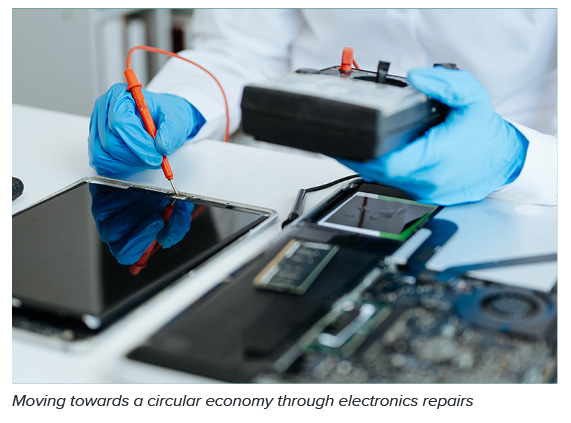
Replace
Single-use plastics (SUP) - Plastics use is projected to almost triple, from 460 million tons in 2019 to 1,231 million tons in 2060,12 and both the US and EU have regulations and targets to reduce plastic waste, particularly single use plastics.
Companies can significantly reduce their single-use plastic consumption in their fulfillment processes by adopting a range of measures, including designing plastic-free packaging, removing plastic pallet wraps, reusing shipping materials and replacing plastic packing materials with more sustainable alternatives.
By replacing single-use plastics with sustainable alternatives, Virgin Media 02 was able to remove as much as 94% of single-use plastics from one of its operations (from 50.7 tons per year in 2021 to 2.9 tons per year in 2023). The result of our combined efforts enabled “the removal of all SUP associated with TV and broadband products before they reach customers to eliminate general waste in customer homes”13.
Recycle
Materials - A fourth opportunity for logistics providers to support the circular economy is by scaling recycling. Recycling typical materials that exist throughout the supply chain, including corrugated cardboard and plastics can be achieved cost-effectively and at scale. For example, commonly found items like polyethene plastic bags can be collated and recycled into pellets for production into new plastic bags increasing their circularity14. With innovation and new approaches, it’s now possible to find ways to manage harder-to-recycle materials, for example, expired medical gowns can be upcycled into grocery bags and old sneakers can be ground up and reconstituted into safer ground cover for playgrounds15.
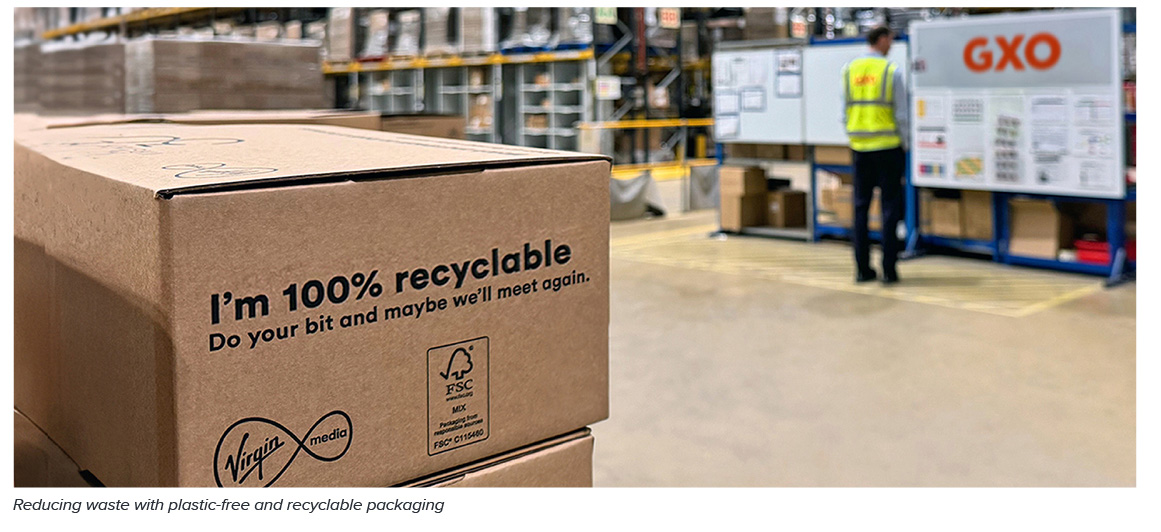
Products - Providing resale platforms for pre-loved items is also an area where companies can extend the life cycle of their products and address sustainability concerns. Official pre-loved, resale platforms that offer cleaned, repaired, authenticated and sometimes warrantied, goods are proving increasingly popular with customers who are more open to buying pre-loved items. In recent years Vinted and Depop have taken off, as a great option for finding and selling preloved items, for higher end pieces, consumers can look toward websites such as Luxe Collective. Logistics providers can utilize all the same components of repairs and rejuvenation services to enable pre-loved goods to re-enter the supply chain as they do for returns. For example,
Polarn O. Pyret (PO.P), a leading Swedish childrenswear brand known for its commitment to sustainability, and GXO worked to deliver a scalable, profitable resale business which saw more than 95% of trade-ins rejuvenated to a state fit for resale16.
As the world continues its shift from a linear to a circular economy, and companies across the EU and US face increasing environmental and sustainability regulations from retailers and brands to logistics suppliers and services, all face an unprecedented opportunity to innovate, show leadership and drive change.
Through careful treatment of products to minimize incorrect or damaged orders, waste can be significantly reduced. Using right-sized packaging with sustainable materials can eliminate plastics and waste and reduce storage requirements, which in return reduce energy and emissions. Right-sized packing as well as shipping and route optimization can reduce mileage and emissions. Returns handled with maximum efficiency and speed that are refurbished and repaired can be returned for resale rather than waste. Waste can be recycled to enable reuse and minimize environmental impact. These services are all available to retailers and brands now, and they are the steps that consumers and governments will increasingly expect to be embraced.
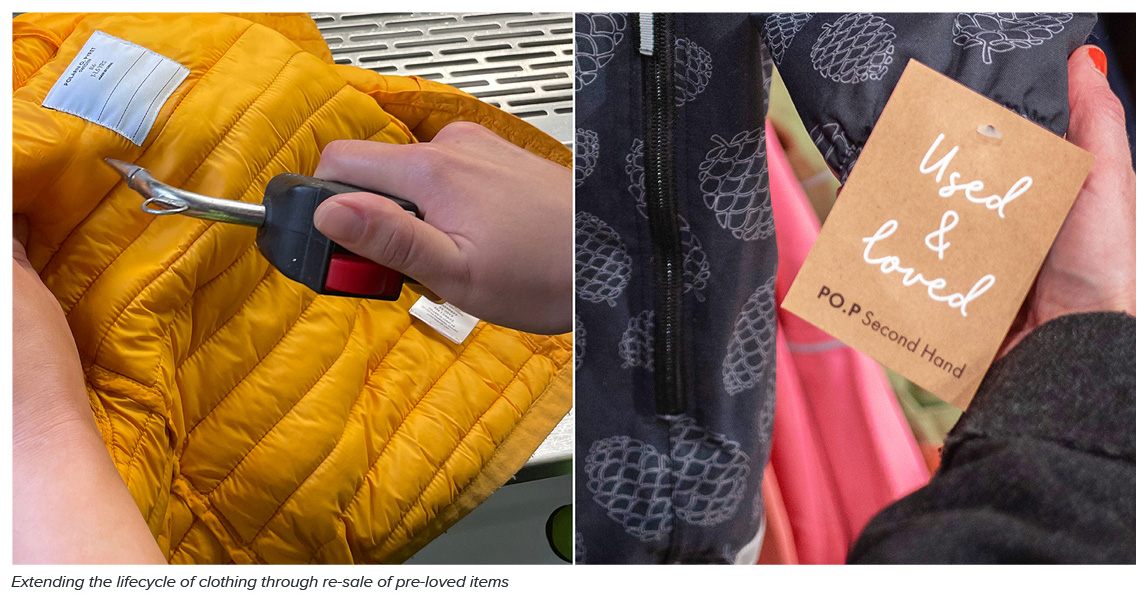
With over 15 years of experience with premier global corporations and law firms, Meagan has responsibility for the Compliance and ESG infrastructure for GXO’s operations worldwide. Prior to GXO, Meagan served as Chief Compliance Officer and Assistant General Counsel for Revlon, Inc., and as Senior Compliance Counsel for the Colgate-Palmolive Company.